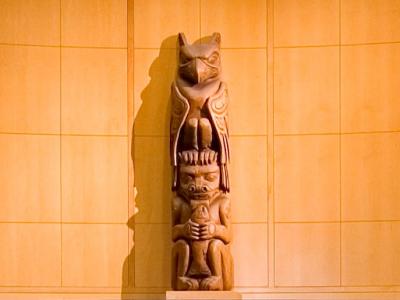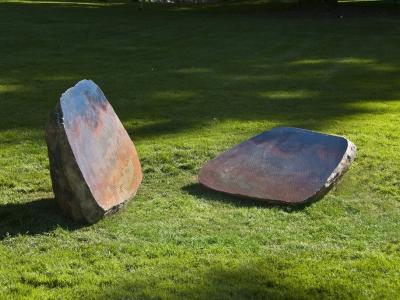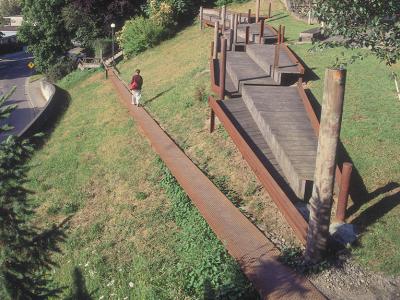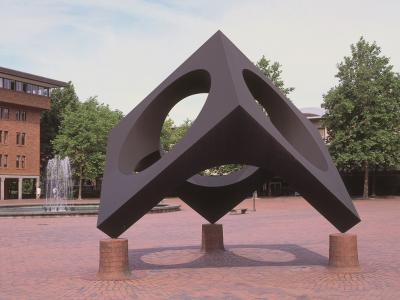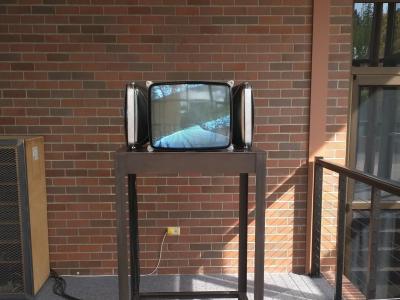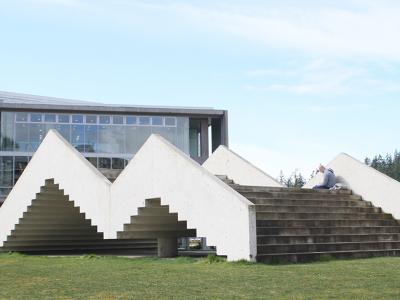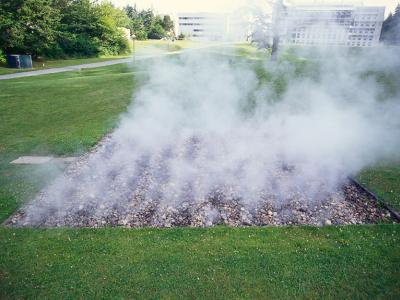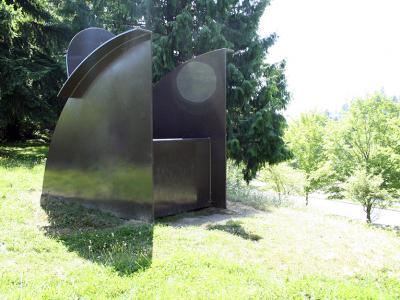Mia Westerlund-Roosen, Flank II, 1978
Video
Audio Description
Audio Transcript
Mia Westerlund Roosen, 1978.
Concrete, steel, copper. 1 1/2' h. x 12' l.
Photo credit: Rochelle Parry
Gift of the artist, 1999.
Description
A product of a specific time, place, and approach to materials, Mia Westerlund Roosen's sculpture was actually made in the Vancouver Art Gallery. She emphasized a process which joins together the dense forms of sculpture and the surface qualities of painting. When placing it in the landscape, she had to consider the work's scale and texture; she therefore, chose an intimate space where trees act as boundaries.
Westerlund Roosen created Flank II (1978) at the Vancouver Art Gallery where she was preparing for a show. Although earlier in the seventies she soaked coarse fabric with polyester resin to place over irregular armatures, she now was pouring concrete into preformed trays. To the poured wedges of concrete she often added a steel plate with its natural markings and her burned line. As in the case of Flank II, she faced concrete wedge with two sheets of copper so that the textured line of the pigmented concrete separated the copper sheets colored by natural oxidation. Similar to other artists such as Judd and Morris, she used simple forms reminiscent of architectural structures, but there always was something more improvisational in her method and more organic in her shapes. Rectangles were skewed into wedges; surfaces were pitted with color; concrete slabs often looked as if they were about to crumble back into a heap of materials or sluff off onto the earth.
Full text
Rather than working with machined metals and surfaces, Westerlund Roosen chose other dominant materials of the urban environment: concrete and asphalt. While others looked at blocks of buildings, she looked at the facades of old buildings and the surfaces of sidewalks and roads. Appropriately in her title Flank, she referred to both fortified walls and to a section of flesh between the last rib and the hip. Just as concrete is the ''flesh and bones'' of modern cities, the skin protects the body's structure as well as reveals its condition and past history.
At first glance, Flank II is often described by the uninitiated as a traffic bump or a heave in the sidewalk. But the sculpture does not rise up on pavement but rather lies horizontally on the grass under a grove of trees adjacent to a major path leading into Haskell Plaza. At present, beyond this area bulldozers and shovels methodically rupture and shift the earth's skin to improve the University's aging infrastructure and to realign its passageways. Over time, the concrete structure of Flank II also has begun to separate and crack; its copper skin has loss its sheen with its natural oxidation and at the edges it crinkles with age. While absolutely abstract, Westerlund Roosen's sculpture evokes connections with urban ground-scapes. When the work was brought to Western after its museum exhibition in Vancouver, it also began to make connections with general slopes of the earth and with the prone body and layers of earth. Westerlund Roosen's siting connects the natural processes of earth and body while her process and materials suggest the changing of structures from fortifications to modern buildings.
© Sarah Clark-Langager


